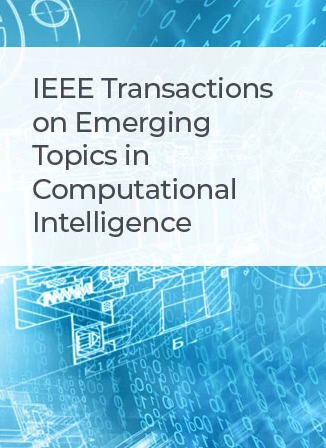Cross-Scale Fuzzy Holistic Attention Network for Diabetic Retinopathy Grading From Fundus Images
IF 5.3
3区 计算机科学
Q1 COMPUTER SCIENCE, ARTIFICIAL INTELLIGENCE
IEEE Transactions on Emerging Topics in Computational Intelligence
Pub Date : 2025-03-06
DOI:10.1109/TETCI.2025.3543361
引用次数: 0
Abstract
Diabetic Retinopathy (DR) is one of the leading causes of visual impairment and blindness in diabetic patients worldwide. Accurate Computer-Aided Diagnosis (CAD) systems can aid in the early diagnosis and treatment of DR patients to reduce the risk of vision loss, but it remains challenging due to the following reasons: 1) the relatively low contrast and ambiguous boundaries between pathological lesions and normal retinal regions, and 2) the considerable diversity in lesion size and appearance. In this paper, a Cross-Scale Fuzzy Holistic Attention Network (CSFHANet) is proposed for DR grading using fundus images, and it consists of two main components: Fuzzy-Enhanced Holistic Attention (FEHA) and Fuzzy Learning-based Cross-Scale Fusion (FLCSF). FEHA is developed to adaptively recalibrate the importance of feature elements by assigning fuzzy weights across both channel and spatial domains, which can enhance the model's ability to learn the features of lesion regions while reducing the interference from irrelevant information in normal retinal regions. Then, the FLCSF module is designed to eliminate the uncertainty in fused multi-scale features derived from different branches by utilizing fuzzy membership functions, producing a more comprehensive and refined feature representation from complex DR lesions. Extensive experiments on the Messidor-2 and DDR datasets demonstrate that the proposed CSFHANet exhibits superior performance compared to state-of-the-art methods.基于眼底图像的糖尿病视网膜病变分级的跨尺度模糊整体关注网络
糖尿病视网膜病变(DR)是世界范围内糖尿病患者视力损害和失明的主要原因之一。准确的计算机辅助诊断(CAD)系统可以帮助DR患者的早期诊断和治疗,以降低视力丧失的风险,但由于以下原因,它仍然具有挑战性:1)相对较低的对比度和病理病变与正常视网膜区域之间的界限模糊,2)病变的大小和外观相当多样化。本文提出了一种用于眼底图像DR分级的跨尺度模糊整体注意网络(CSFHANet),该网络主要由模糊增强整体注意网络(FEHA)和基于模糊学习的跨尺度融合网络(FLCSF)两部分组成。FEHA通过在通道和空间域上分配模糊权重,自适应地重新校准特征元素的重要性,从而增强模型学习病变区域特征的能力,同时减少正常视网膜区域中不相关信息的干扰。然后,设计FLCSF模块,利用模糊隶属函数消除来自不同分支的融合多尺度特征的不确定性,对复杂DR病变产生更全面、更精细的特征表示。在Messidor-2和DDR数据集上进行的大量实验表明,与最先进的方法相比,所提出的CSFHANet具有优越的性能。
本文章由计算机程序翻译,如有差异,请以英文原文为准。
求助全文
约1分钟内获得全文
求助全文
来源期刊

IEEE Transactions on Emerging Topics in Computational Intelligence
Mathematics-Control and Optimization
CiteScore
10.30
自引率
7.50%
发文量
147
期刊介绍:
The IEEE Transactions on Emerging Topics in Computational Intelligence (TETCI) publishes original articles on emerging aspects of computational intelligence, including theory, applications, and surveys.
TETCI is an electronics only publication. TETCI publishes six issues per year.
Authors are encouraged to submit manuscripts in any emerging topic in computational intelligence, especially nature-inspired computing topics not covered by other IEEE Computational Intelligence Society journals. A few such illustrative examples are glial cell networks, computational neuroscience, Brain Computer Interface, ambient intelligence, non-fuzzy computing with words, artificial life, cultural learning, artificial endocrine networks, social reasoning, artificial hormone networks, computational intelligence for the IoT and Smart-X technologies.
 求助内容:
求助内容: 应助结果提醒方式:
应助结果提醒方式:


